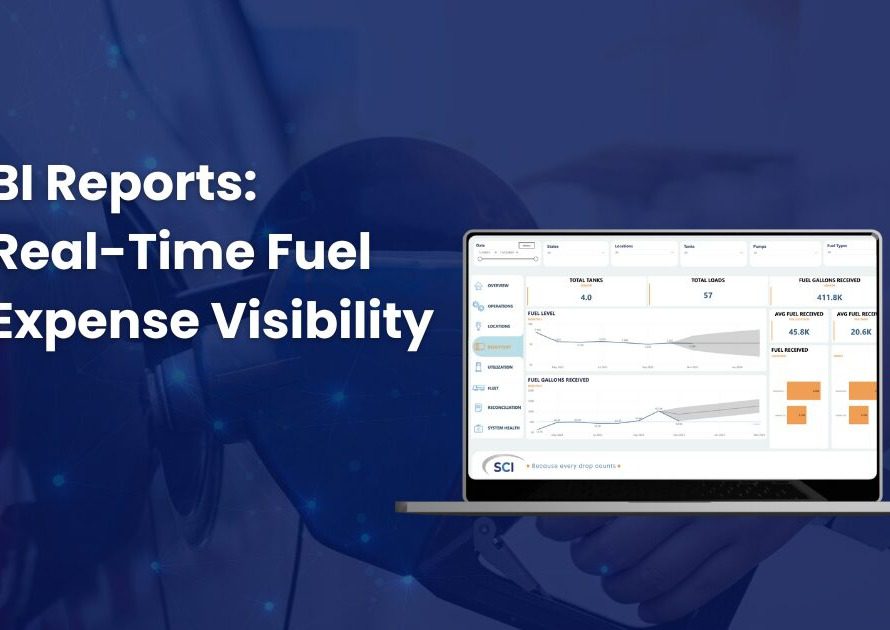Fuel tank monitoring systems play a crucial role in efficient fuel management by providing real-time visibility into fuel levels, consumption, and potential issues. If you’re considering installing a system or maintaining an existing one, this guide will walk you through the process step by step.
Step 1: Assess Your Fuel Management Needs

Before installation, it’s essential to evaluate your specific fuel monitoring requirements. Consider factors like:
- The number of fuel tanks you’re managing
- The types of fuel being stored
- The size and location of the tanks
- Your monitoring needs (real-time data, consumption tracking, etc.)
Tip: If you’re unsure about your needs, a fuel management expert can provide recommendations tailored to your operation.
Step 2: Choose the Right Fuel Tank Monitoring System
Selecting the right system for your business depends on various factors, including tank size, monitoring requirements, and automation capabilities. For instance, SCI’s Level Shield offers real-time monitoring, inventory tracking, and alerts to help optimize your fuel usage.
Key features to look for:
- Real-time inventory tracking
- Remote access to data
- Customizable alert systems
- Integration with existing management software
Step 3: Prepare for Installation

Once you’ve chosen the system, it’s time to prepare the site for installation. This includes:
- Ensuring your fuel tanks are in good condition and free from leaks or contamination
- Verifying that there’s access to power and data connections, if necessary
- Ensuring that all necessary permits and approvals are in place
For more complex systems, professional installation services may be required to ensure everything runs smoothly.
People illustrations by Storyset
Step 4: Install the Monitoring Equipment
Fuel tank monitoring systems typically involve installing sensors on the tank to track fuel levels, temperature, and other key metrics. The installation process varies depending on the type of system but generally includes:
- Mounting sensors on the tank at the recommended positions
- Connecting the sensors to the control unit or cloud-based platform
- Calibrating the system to ensure accurate data readings
- Testing the system to ensure all components are working as expected
Step 5: Configure the System Settings
Once the hardware is in place, configure the software or dashboard to match your operational needs. You can set up:
- Thresholds for low fuel alerts
- Scheduled reporting for inventory levels
- User access controls to determine who can view and manage data
- Automated alerts for irregularities like rapid fuel loss or unauthorized use
Step 6: Train Your Team
It’s essential that your team understands how to use the fuel tank monitoring system to its full potential. Provide training sessions to ensure everyone is comfortable with:
- Reading and interpreting data
- Responding to system alerts
- Performing routine checks to ensure the system is operating correctly
At SCI, we offer comprehensive training and support for your team. Our experienced installation crew will ensure everything is set up properly, while our helpdesk is always available to assist with any questions or concerns.
Step 7: Regular Maintenance and Troubleshooting
Maintaining your fuel tank monitoring system is crucial to ensure continued accuracy and efficiency. Follow these maintenance steps:
- Periodic sensor checks: Ensure sensors are clean, properly mounted, and calibrated.
- Software updates: Keep the system’s software up to date for optimal performance.
- Tank inspections: Regularly inspect tanks for signs of damage, corrosion, or leaks.
- Routine system tests: Conduct tests to verify the system’s accuracy and functionality.
Step 8: Monitor and Adjust as Needed
The beauty of fuel tank monitoring systems is that they allow for continuous data analysis and optimization. Use the insights provided by your system to:
- Adjust fuel ordering schedules to prevent overstock or shortages
- Track and analyze fuel consumption trends to identify inefficiencies
- Monitor for any unusual patterns that could indicate theft or leakage
Conclusion
Installing and maintaining a fuel tank monitoring system can significantly improve your fuel management operations by providing real-time data, reducing waste, and increasing efficiency. By following these steps, you can ensure your system is properly installed and well-maintained for long-term success.
At SCI, we offer state-of-the-art fuel tank monitoring systems tailored to your needs. Our dedicated team is ready to assist you with installations, provide ongoing support, and train your staff to make the most of your new system.
Interested in learning more about our fuel monitoring solutions? Contact us today for a free fuel management consultation! Our experts will guide you through the process and help you find the right system to meet your needs.



